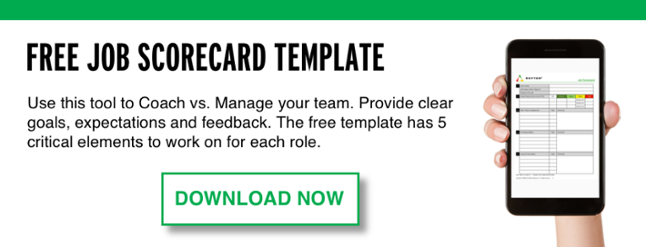Like many of you, I have found that finding and hiring the right people can be a challenge. Most of us use traditional methods of hiring that include posting jobs in various places and sifting through resumes to find the best candidates. Once we choose what we think to be the strongest candidates, we may phone screen, or invite them in for a face-to-face interview. Either the interview consists of the individual running the session and telling us all of the great things they have done, or us telling the candidate how wonderful the company is. I did this in my early days of hiring and spent more time talking than the candidate did, only to realize when they left the room, I knew very little about them or their capabilities.
Fortunately, I was introduced to a better method about ten years ago. The methodology is Topgrading and was developed by Brad Smart. Jim Collins tells us that the most important thing we can do is get the right people on the bus and then in the right seats. Larry Bossidy, former chairman of Allied Signal, spent the majority of his time finding and hiring the right talent. Having worked with and coached many clients through the years, it has been become very evident that the most important factor for a high performance company is the team of individuals that make it successful.
 Most of the clients I work with now use Topgrading in some form or fashion. I have watched those that do improve performance and execution and grow at faster rates. Let’s look at the components of the Topgrading methodology.
Most of the clients I work with now use Topgrading in some form or fashion. I have watched those that do improve performance and execution and grow at faster rates. Let’s look at the components of the Topgrading methodology.
The Topgrading methodology teaches us to hire A players for each position. The idea is to start from the top down because A players hire A players. You may have B players that can be groomed into A players or moved into another position where they can perform as A players. In most cases, you are going to need to move the C players out of the organization.
Here are four steps to get you started:
1. Conduct talent reviews for everyone on your team.
2. Create “Job Scorecards” for each key role
3. Build your virtual bench of A players and potential A players to meet future needs.
4. Learn how to conduct 3 different types of interviews:
a. Screening interviews
b. Topgrading interviews
c. Reference check interviews
The talent review will help you determine how to distinguish your A players from B and C players. This will also help you create a roadmap for coaching, development and redeployment.
The job scorecard will clearly define the key accountabilities, competencies, success factors and alignment to the companies’ core values. Download the Job Scorecard tool to get you started.
As I mentioned earlier, Larry Bossidy said his most important job was to identify new talent. You need to develop a consistent flow of talent coming your way. Once the word is out that you are a company of A players, it is much easier to attract other A players. Everyone in the company is responsible for identifying potential A players, not just human resources.
Interviewing is the most important part of the Topgrading system. It is a very structured process that begins by screening out the wrong players and screening in potential A players. There are some excellent tools on the Topgrading website to help you with this part of the process such as the “Career History” form. The candidate does a lot of the work up front to help you determine if you should move on to the next step.
Next, you conduct the Topgrading interview with potential A candidates and peel back the onion from the time they entered college through every position they have held. You work through the person’s background to learn about their successes in school, their work history, meeting their career goals and what competencies they hold. The intent is to clearly identify and verify their past patterns of performance.
The last part of the system is to do the reference interviews. This is what Brad Smart calls his secret sauce. On the career history form, the individual checks a box agreeing to set up the reference interviews with the individuals that you choose. This in itself filters out most C players, as they know they cannot pad their resume or give you references that are merely friends willing to make them sound good. You are going to confirm what the candidate has told you during the interview process. History has shown that 90 percent of the references of A candidates will speak candidly.
So ask yourself if your hiring and retention process is getting you the results you need. Are you hiring and building a team of A players? If the answer is no, take a deeper look into the Topgrading system. The results are worth the effort.
Good luck and execute well, Alan
Photo Credit: iStock by Getty Images



 LinkedIn
LinkedIn
 Facebook
Facebook
